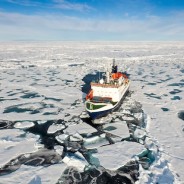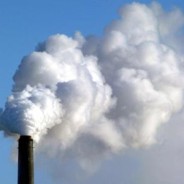Climate change
Cambiamenti climatici: quali rischi per la salute?
Le condizioni ambientali influenzano la qualità di vita e la salute degli individui. E’ sempre più diffusa la consapevolezza dei rischi che possono emergere, per esempio, da una scarsa qualità dell’acqua o dall’alta concentrazione di sostanze inquinanti nell’aria, e i dati parlano chiaro: l’inquinamento dell’aria è causa, ogni anno, di circa 1,3 milioni di decessi nel mondo. Una recente revisione di un migliaio di ricerche scientifiche svolta dall’International Agency for Research on Cancer (IARC), agenzia specializzata dell’Organizzazione Mondiale della Sanità (OMS), ha classificato l’inquinamento atmosferico tra le cause principali del cancro ai polmoni [1]; un quarto dei decessi di bambini a livello mondiale sono attribuibili ad ambienti insalubri e insicuri. (altro…)
The polar vortex in no way disproves climate change
Almost half of the Lower 48 will shiver under sub-zero wind chills Tuesday morning. Countless records will be set. Yet none of that means a thing about the existence of climate change, its severity or its consequences. (altro…)
November Was Cold, But the Climate Keeps Warming
Global warming is a misnomer. “Warming” makes it sound as if the climate will get hotter at a steady, predictable pace—like a pot of soup heating on the stove. But that’s not how our enormously complex climate system works. The increasing concentration of carbon dioxide and other warming gases in the atmosphere is just one of many factors affecting the global climate—including the natural year-to-year variability that has always been at work. Over the short term, temperatures can rise and fall like the fluctuating value of a single company in the stock market. But the long-term trends—the important trends—remain unchanged. (altro…)
Why climate change threatens Peru’s poverty reduction mission
The Peruvian Amazon became a net emitter of carbon dioxide rather than oxygen for the first time in 2012, according to the UN Development Programme’s (UNDP) latest human development country report. The reversal of the rainforest’s usual role as a carbon sink is a direct result of the droughts in the western Amazon in 2005 and 2010 – and a stark reminder, say scientists, that this mega-biodiverse country is highly vulnerable to climate change. (altro…)
C40 City Diplomacy Addresses Climate Change
The geopolitical configuration that emerged after the end of the Cold War has been redefining the world stage. In recent decades, we have observed the fall of decaying political superpowers, the territorial redesign of countries and institutions and were taken unawares with the meteoric ascent of emerging economies. The old binary system is long gone. In this increasingly multipolar arena, new players have risen onto the scene — the cities. (altro…)
After Changes, How Green Is The Times?
In January, The Times dismantled its “pod” of reporters and editors devoted to that subject. And in March, it discontinued its Green blog, a daily destination for environmental news. Times editors emphasized that they were not abandoning the subject — just taking it out of its silo and integrating it into many areas of coverage. The changes were made for both cost-cutting and strategic reasons, they said, and the blog did not have high readership. Readers and outside critics weren’t buying it. They scoffed at the idea that less would somehow translate into not only more, but also better.
So what has happened since? And where does the situation stand now? I talked to Times journalists and outside observers who are close readers of The Times’s environment coverage — including former Vice President Al Gore, a leading voice and a former newspaper journalist himself. And with the help of a news assistant, Jonah Bromwich, my office did its own analysis. (altro…)
Just 90 companies caused two-thirds of man-made global warming emissions
The climate crisis of the 21st century has been caused largely by just 90 companies, which between them produced nearly two-thirds of the greenhouse gas emissions generated since the dawning of the industrial age, new research suggests. The companies range from investor-owned firms – household names such as Chevron, Exxon and BP – to state-owned and government-run firms. (altro…)
A New Alliance on Climate Change
In an effort to compensate for the failure of central governments to address the dangers of climate change with comprehensive national policies, cities, states and regions have developed their own strategies to rein in emissions of carbon dioxide and other greenhouse gases. California’s ambitious plan aims to reduce emissions 80 percent by 2050 by requiring cleaner cars, more energy-efficient buildings and renewable fuels. Nine northeastern states have joined in a regional trading program aimed at reducing power-plant emissions. (altro…)
Majority of red-state Americans believe climate change is real, study shows
A vast majority of red-state Americans believe climate change is real and at least two-thirds of those want the government to cut greenhouse gas emissions, new research revealed on Wednesday. The research, by Stanford University social psychologist Jon Krosnick, confounds the conventional wisdom of climate denial as a central pillar of Republican politics, and practically an article of faith for Tea Party conservatives.
Instead, the findings suggest far-reaching acceptance that climate change is indeed occurring and is caused by human activities, even in such reliably red states as Texas and Oklahoma. “To me, the most striking finding that is new today was that we could not find a single state in the country where climate scepticism was in the majority,” Krosnick said in an interview. (altro…)
Greenhouse gases rise to record, will drive climate change, world body says
Greenhouse gases in the atmosphere are rising at an accelerating pace to record levels, a trend that will drive climate change and endanger future generations, according to the World Meteorological Organisation. Carbon dioxide, the most important greenhouse gas linked to fossil fuel burning and deforestation, rose by an average of 2.2 parts per million (ppm) in 2012 to 393.1. That increase compared with 1.5 ppm in the 1990s and 2 ppm in the past decade, and brings atmospheric levels to 41 per cent more than pre-industrial times, the WMO said in its annual Greenhouse Gas Bulletin. (altro…)









